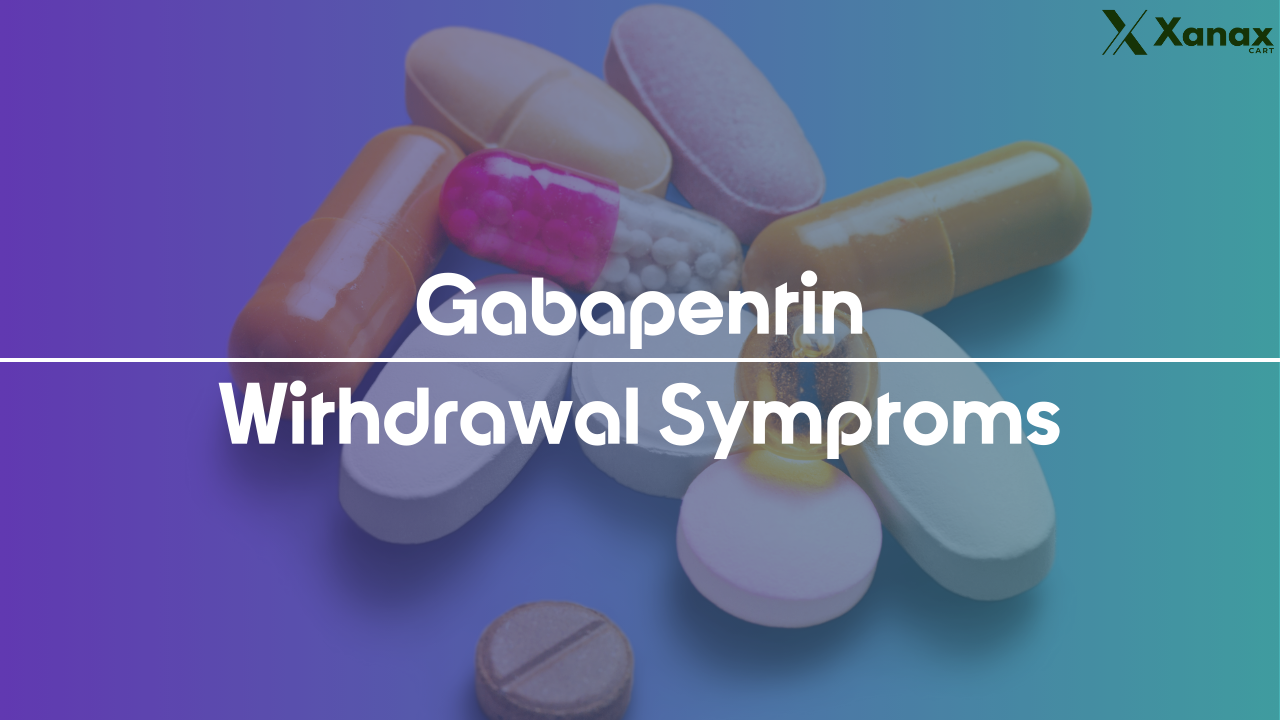Gabapentin is a medication commonly prescribed for nerve pain, seizures, and even off-label for anxiety and sleep disorders. While it can be highly effective, many people find themselves dependent on it, especially after long-term use.
If you’re considering stopping gabapentin, you may be wondering about withdrawal symptoms, how long they last, and the best way to taper off safely.
Withdrawal from gabapentin can be challenging. Symptoms can range from mild discomfort to severe neurological effects, and the timeline varies from person to person.
To avoid severe withdrawal, a proper tapering schedule is crucial. In this article, we’ll cover everything you need to know about gabapentin withdrawal, including symptoms, a taper chart, and how long it takes for gabapentin to fully leave your system.
What is Gabapentin?
Gabapentin is an anticonvulsant primarily used to treat epilepsy and neuropathic pain. However, it is also frequently prescribed off-label for conditions like anxiety, restless leg syndrome, and even migraines.
How Does Gabapentin Work?
Unlike opioids or traditional painkillers, gabapentin works by affecting calcium channels in the nervous system. This helps calm nerve activity, reducing pain and seizure risks.
However, long-term use can lead to physical dependence, making withdrawal a real concern for many users.
See Also: How Long Does Valium Last?
Gabapentin Withdrawal Symptoms
Stopping gabapentin suddenly can lead to withdrawal symptoms, which can range from mild to severe. Some common symptoms include:
- Anxiety and irritability
- Nausea and vomiting
- Sweating
- Insomnia
- Dizziness
- Heart palpitations
- Muscle pain
- Seizures (in extreme cases)
These symptoms can begin within hours to a few days after stopping the drug and may last for weeks.
How Long Does It Take for Gabapentin to Wear Off After Stopping?
Gabapentin has a half-life of approximately 5 to 7 hours in healthy adults. This means that most of the drug is eliminated within 24 to 48 hours after the last dose. However, withdrawal symptoms may persist much longer, depending on factors such as dosage, duration of use, and individual metabolism.
Factors That Influence Withdrawal Duration
- Dosage: Higher doses lead to longer withdrawal periods.
- Duration of use: Long-term users experience prolonged withdrawal.
- Metabolism: Faster metabolisms clear the drug more quickly.
- Tapering method: A slow taper minimises withdrawal symptoms.
Gabapentin Withdrawal Timeline
The withdrawal timeline can vary significantly, but a general breakdown is as follows:
- First 24-48 Hours: Early symptoms appear, including anxiety, sweating, and dizziness.
- Days 3-7: Peak withdrawal symptoms occur, such as nausea, insomnia, and mood changes. Seizure risk is highest during this period.
- Weeks 2-4: Symptoms begin to subside, but psychological withdrawal (e.g., anxiety, depression) may persist.
- Beyond 1 Month: Some individuals experience post-acute withdrawal symptoms (PAWS), including mood swings and fatigue.
Gabapentin Taper Chart
To avoid withdrawal, tapering off gabapentin gradually is essential. Here’s a rough guideline:
| Current Dose | Reduction Rate | Duration |
|---|---|---|
| 1200 mg/day | Decrease by 300 mg/week | 4 weeks |
| 900 mg/day | Decrease by 100-200 mg/week | 4-6 weeks |
| 600 mg/day | Decrease by 100 mg/week | 6 weeks |
| 300 mg/day | Decrease by 50 mg every 5-7 days | 6-8 weeks |
Always consult a healthcare provider before making adjustments to your dosage.
Gabapentin Taper: Best Practices
- Reduce the dose gradually to prevent severe withdrawal symptoms.
- Stay hydrated and maintain a healthy diet.
- Engage in light exercise to help with mood swings.
- Consider supportive supplements like magnesium and vitamin B.
- Seek medical guidance if withdrawal symptoms become severe.
Dangers of Stopping Gabapentin Cold Turkey
Stopping gabapentin suddenly can lead to severe withdrawal symptoms, including seizures. It’s always safer to taper off the drug under medical supervision.
Who is at Higher Risk?
- Long-term users
- People on high doses (900 mg or more daily)
- Those with a history of seizures or neurological conditions
How to Manage Gabapentin Withdrawal Symptoms
Medical Support
A doctor may prescribe alternative medications to ease withdrawal symptoms, such as low-dose benzodiazepines or antidepressants.
Lifestyle Adjustments
- Get plenty of rest.
- Engage in stress-reducing activities like meditation and yoga.
- Avoid alcohol and other drugs that may worsen withdrawal symptoms.
Conclusion
Gabapentin withdrawal can be uncomfortable, but with the right approach, it is manageable. Gradual tapering is the safest way to stop using gabapentin and prevent severe withdrawal effects.
If you’re planning to stop, work closely with your doctor to create a tapering plan that suits your body’s needs. Understanding the withdrawal timeline and symptoms can help you prepare and ensure a smoother transition.
Gabapentin is mostly eliminated within 24-48 hours, but withdrawal symptoms can last much longer.
How long does gabapentin withdrawal last?
Most symptoms peak within the first week and gradually improve over 2-4 weeks, though some may experience lingering effects beyond a month.
Is gabapentin addictive?
While not traditionally considered addictive, gabapentin can lead to physical dependence, requiring a proper tapering process to discontinue safely.
How long does gabapentin stay in your system?
Gabapentin is mostly eliminated within 24-48 hours, but withdrawal symptoms can last much longer.
What helps with gabapentin withdrawal?
A slow taper, hydration, proper nutrition, light exercise, and possibly medical support can help ease withdrawal symptoms.
Can I stop gabapentin cold turkey?
No, stopping suddenly can lead to severe withdrawal symptoms, including seizures. Always taper off gradually under medical supervision.


0 Comments